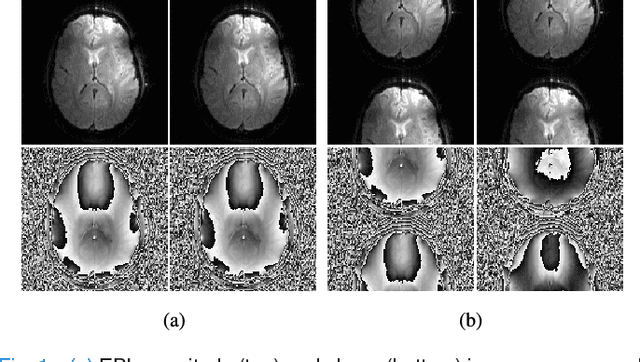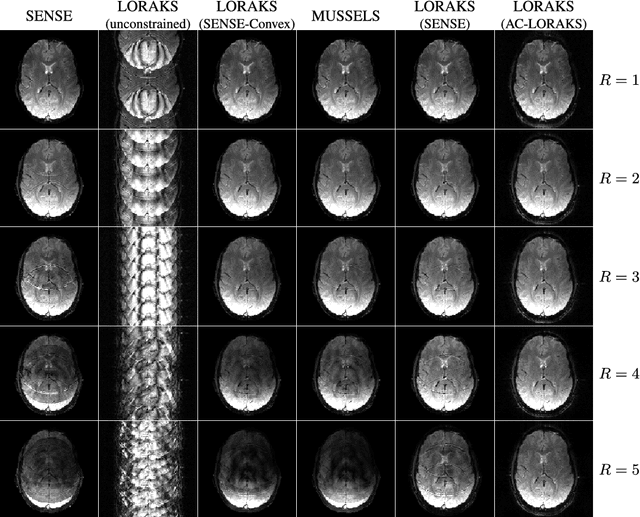W. Scott Hoge
Robust Autocalibrated Structured Low-Rank EPI Ghost Correction
Jul 30, 2019Abstract:Purpose: We propose and evaluate a new structured low-rank method for EPI ghost correction called Robust Autocalibrated LORAKS (RAC-LORAKS). The method can be used to suppress EPI ghosts arising from the differences between different readout gradient polarities and/or the differences between different shots. It does not require conventional EPI navigator signals, and is robust to imperfect autocalibration data. Methods: Autocalibrated LORAKS is a previous structured low-rank method for EPI ghost correction that uses GRAPPA-type autocalibration data to enable high-quality ghost correction. This method works well when the autocalibration data is pristine, but performance degrades substantially when the autocalibration information is imperfect. RAC-LORAKS generalizes Autocalibrated LORAKS in two ways. First, it does not completely trust the information from autocalibration data, and instead considers the autocalibration and EPI data simultaneously when estimating low-rank matrix structure. And second, it uses complementary information from the autocalibration data to improve EPI reconstruction in a multi-contrast joint reconstruction framework. RAC-LORAKS is evaluated using simulations and in vivo data, and compared to state-of-the-art methods. Results: RAC-LORAKS is demonstrated to have good ghost elimination performance compared to state-of-the-art methods in several complicated acquisition scenarios (including gradient-echo brain imaging, diffusion-encoded brain imaging, and cardiac imaging). Conclusion: RAC-LORAKS provides effective suppression of EPI ghosts and is robust to imperfect autocalibration data.
Navigator-free EPI Ghost Correction with Structured Low-Rank Matrix Models: New Theory and Methods
Mar 06, 2018



Abstract:Structured low-rank matrix models have previously been introduced to enable calibrationless MR image reconstruction from sub-Nyquist data, and such ideas have recently been extended to enable navigator-free echo-planar imaging (EPI) ghost correction. This paper presents novel theoretical analysis which shows that, because of uniform subsampling, the structured low-rank matrix optimization problems for EPI data will always have either undesirable or non-unique solutions in the absence of additional constraints. This theory leads us to recommend and investigate problem formulations for navigator-free EPI that incorporate side information from either image-domain or k-space domain parallel imaging methods. The importance of using nonconvex low-rank matrix regularization is also identified. We demonstrate using phantom and \emph{in vivo} data that the proposed methods are able to eliminate ghost artifacts for several navigator-free EPI acquisition schemes, obtaining better performance in comparison to state-of-the-art methods across a range of different scenarios. Results are shown for both single-channel acquisition and highly accelerated multi-channel acquisition.
 Add to Chrome
Add to Chrome Add to Firefox
Add to Firefox Add to Edge
Add to Edge